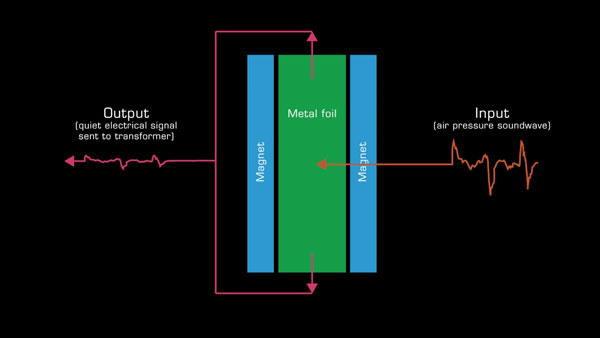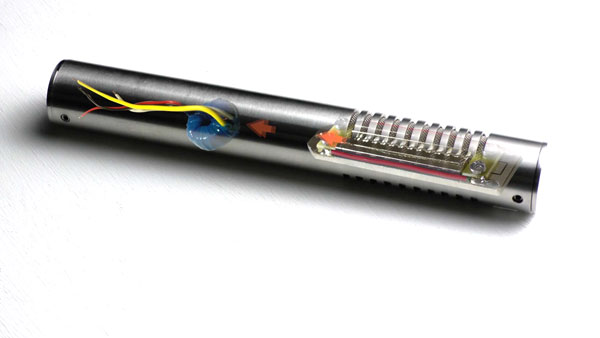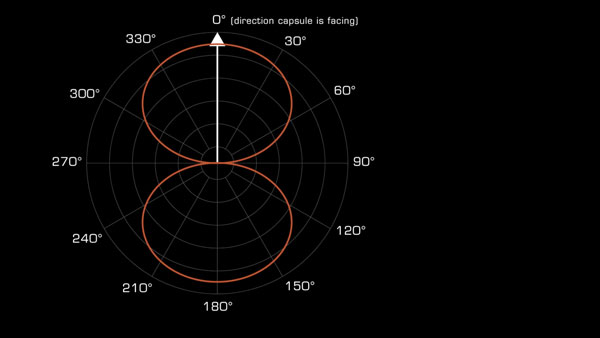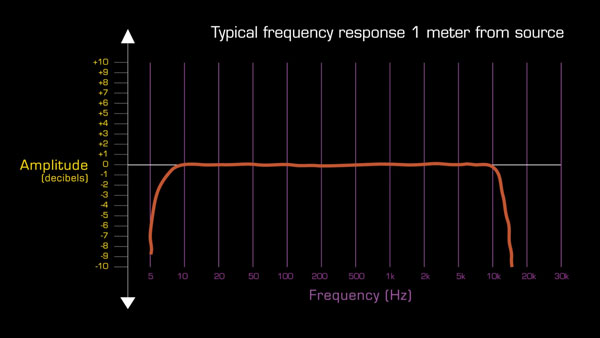Microphones 11
Ribbon microphones
- Video
- Script
Welcome to this tutorial on ribbon microphones.
Before quality condenser microphones (also known as capacitor) became widely available in the 1950s, ribbon microphones were the first choice of professional recording engineers. Despite their technical disadvantages they are still used today especially for recordings taking place in acoustically controlled spaces where a smooth mid-range response is required. In the past Nat King Cole, Ella Fitzgerald, Elvis Presley and Billie Holiday all made classic recordings with ribbon mic's.
Caption - How does a ribbon microphone work?
Unlike other microphones, ribbon microphones are simple in design. A thin foil of metal is suspended within the field of two magnets. This arrangement is often known as the ribbon motor.

When a soundwave hits the foil it moves and causes an electrical signal to be induced in the foil itself. This signal is sent to be boosted by a transformer within the body of mic and then down a mic lead to a microphone pre-amplifier.

Until powerful miniature magnets became available, ribbon microphones were large, expensive to manufacture and produced a very low output. Today they can be much smaller and it is even possible to make your own.
Caption - Polar pattern
Almost all ribbon microphones have a figure-of-eight polar pattern and pick up sound equally from the front and rear. This means they pickup a great deal of ambient room sound and are therefore mostly used in acoustically controlled spaces.

The sound they produce is relatively uncoloured compared to other microphones and they are therefore often used as overheads when recording orchestra sections and drums.
Caption - Bass lift proximity effect
Ribbon microphones exhibit a pronounced bass-lift proximity effect, boosting low frequencies when close to a source, and are therefore usually placed a meter or more away from the source. However, this effect can be used to help thicken thin sounds and can therefore be effective for some singers.
Caption - Frequency response
When placed at a distance beyond the proximity effect, ribbon microphones have a flat frequency response up to 15kHz, above which their sensitivity drops dramatically. At first listen this characteristic can make them sound dull but they can be useful for taming excessively trebely sources or recording instruments without high frequency detail such as electric guitar cabinets and brass instruments.

This lack of high frequency response also helps to emphasise the smooth mid range response they are both capable of and loved for.
Caption - Phantom power and additional circuitry
Most ribbon microphones not only do not require phantom power, but can be seriously damaged by it. Therefore extreme care must be taken when using them with a mic pre-amp. Models that require phantom power will probably be fitted with modern active circuitry designed to mitigate some of their shortcomings such as low output, limited high frequency response and the proximity effect.
However, purists maintain that these shortcomings help give ribbon microphones their character and additional electronics detract from the experience of using one.
Caption - Low output
Early ribbon microphones produced a very low output and therefore required specialist pre-amplifiers to boost their outputs to usable levels. Today most models produce sufficient output, albeit lower than most condenser microphones. Some mic-pre's have a special ribbon mode that disables phantom power and enables circuitry optimised to receive the mic's lower than normal output.
Because of this low output, signal to noise ratio is compromised, and ribbon microphones are not always the best choice for quiet sources.

Caption - Handling
The foil at the heart of the ribbon motor is delicate in some models and can be easily damaged. Although some motors can handle high sound levels of up to 160 decibels, sudden shocks, plosives and extreme transients can tear the foil. Also, because the foil is suspended it can sag if the microphone is not stored upright. For these reasons, many models come with extended motor replacement guarantees.
Caption - Thanks for watching
The script for this video, with accompanying images, can be found at projectstudiohandbook.com
We suggest you subscribe at our YouTube channel, and join our mailing list at our website to receive notification of new videos, blog posts and subscriber only extras.
Thanks for watching.